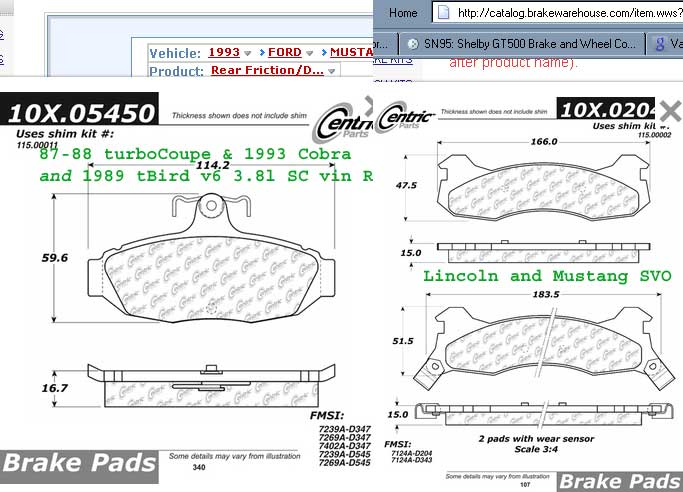I got my ceramic pads at autozone of all places,"duralast brand" I got them to get rid of my aftermarket rim dust shields, The wheels stay cleaner longer. I didnt get them for a performace advantage if there is one, just wanted my rims to stay cleaner
I completely agree, the ceramic dust is much lighter and does not stand out.
Additionally I have been reading that ceramic brakes are so much superior now compared to just a few years ago, since I have all new front and rear suspension including all new rotors (8 of them) I wanted to start out ceramic on the fresh surfaces...
here is some crap I had gathered
please all debunk any lies contained within!!
http://www.asashop.org/autoinc/nov2002/mech.htm
Although first introduced as far back as 1985 on some new vehicles, mass after-market applications for ceramic-based disc brake pads are just now becoming widely available. Approximately 33 percent of all new vehicles, domestic and foreign combined, now have ceramic-based disc brake pads. The newest generation of ceramic brake lining compounds contain no chopped steel fibers or steel wool as found in earlier semi-metallic linings, but instead substitute ceramic compounds and copper fibers. These changes provide modern ceramic-based lining materials the capability of handling today's high brake temperatures with less heat fade, faster recovery time, and less wear on both the pads and rotors.'
Of even more value to brake repair facilities is the ability of ceramic lining compounds to significantly reduce annoying brake noise or squeal, which is the No. 1 consumer complaint relating to brake service. Ceramic compounds dampen noise and move brake pad vibrations to a frequency outside of our human hearing range, 20 Hz through 20,000 Hz. As with earlier disc brake pad designs, some ceramic pad applications may also incorporate other noise-reducing features such as chamfers, slots and insulator shims. One leading after-market manufacturer has gone as far as naming its line of ceramic brake pads "Quiet Stop."
__more___
Since they were first used on a few original equipment applications in 1985, friction materials that contain ceramic formulations have become recognized for their desirable blend of traits. These pads use ceramic compounds and copper fibers in place of the semi-metallic pad's steel fibers. This allows the ceramic pads to handle high brake temperatures with less heat fade, provide faster recovery after the stop, and generate less dust and wear on both the pads and rotors. And from a comfort standpoint, ceramic compounds provide much quieter braking because the ceramic compound helps dampen noise by generating a frequency beyond the human hearing range.
Ceramic pads meet or exceed all original equipment standards for durability, stopping distance and noise. According to durability tests, ceramic compounds extend brake life compared to most other semi-metallic and organic materials and outlast other premium pad materials by a significant margin - with no sacrifice in noise control, pad life or braking performance.
This is quite an improvement over organic and semi-metallic brake materials that typically sacrifice pad life to reduce noise, or vice versa.
__more___
Ceramic Brake Pads
Performance Ceramic Brake Pads Correct Applications
Ceramic brake pads are widely used in today's marketplace as replacements for OEM and asbestos pads. The long life and increased stopping power alone are great advantages over traditional pads. When you consider the added benefit of heat retention in the pads, which promotes extended rotor life and prevents warping, ceramic brake pads are the smart choice for the consumer who wants performance and long life.
The use of performance ceramic brake pads is highly suited to the street performance market. This includes high line cars such as BMW, Audi, Mercedes, and other European as well as American performance automobiles. Also included in this market are performance street rods and muscle cars. Performance ceramic brake pads are best suited for cars between 2800 and 3200 lbs.
What are the Benefits of Ceramic Brake Pads?
One of the main advantages of ceramic brake pads is the ability to draw heat into the pad and away from the rotor. Heat on rotors causes warping of the rotors, so the heat absorbed into a ceramic brake pad helps preserve the life of the rotors. Ceramic brake pads are more efficient than older asbestos pads and have much greater stopping power. This translates into a pad that lasts longer than traditional brake pads with increased on road performance.
Not all Ceramic Brake Pads are Created Equal
Not all ceramic brake pads are the same. There are countless different mixes of ingredients and materials that make one pad better than another.





